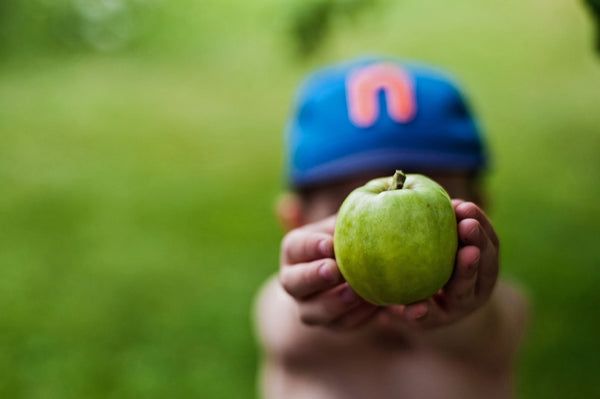Autism, Constipation & Growing Up Prebiotics
share this article

A Parent's Guide to Manage Constipation in Autistic Kids
Constipation is common among infants, toddlers and children. It is even more prevalent among children with autism spectrum disorder (ASD). If your child has ASD and is frequently constipated, you aren’t alone. Sadly, autism and constipation go hand in hand. Up to 50% or more of children with ASD report the symptom of constipation. Here is Begin’s guide for how to manage constipation in autistic kids.
Autism and constipation – Where does constipation come from?
Many different factors can lead to constipation. Here are some of the main causes:
Selective eating
Children with ASD may be selective eaters due to aversions to certain tastes and textures. Often foods high in fiber, such as fruits, vegetables, and whole grains, are avoided in favor of highly processed foods.
Not drinking enough
Children with ASD may dislike drinking water and other fluids. Fluids are important to keep things moving, so if children aren’t drinking enough it may lead to constipation.
Children who feel uncomfortable pooping may intentionally hold it in. This can turn into a vicious cycle. The longer poop is held in, the more it dries out and the harder it can be to excrete. Additionally, children who hold in poop may eventually stop feeling the urge.
Difficulties potty training
Children who are resistant to potty training may hold in their poops. This can lead to constipation for the same reasons mentioned above.
Decreased physical activity
The colon responds to activity, so a lack of activity can lead to constipation. Decreased muscle tone can also lead to constipation.
Medications
Constipation can be a side effect of many medications, both over the counter and prescription.
What can you do to help your autistic kid with constipation?
There are many different approaches you can take to help improve your child’s constipation. Here are a few:
Eliminate trigger foods
Certain foods, such as dairy and unripened bananas, may lead to constipation, especially when consumed in excess. Speak with your pediatrician or a registered dietitian to determine if your child would benefit from removing foods from their diet.
Make fluids fun
Encourage drinking by using fun cups, twirly straws, or flavoring your child’s water with some fresh fruit. There are also fun apps, such as Plant Nanny, which can help encourage your little one to drink. Your child will need to drink enough water so that their plant can survive!
Eat more fiber
Fruits, veggies and whole grains are excellent sources of fiber and can be helpful with managing constipation. Don’t pressure your child to eat foods he or she isn’t comfortable with. Instead, try introducing new foods in fun ways. Try smoothies, popsicles, fruits cut into fun shapes, and serving foods with cute picks.
Increase physical activity
Find movement that your child enjoys! This may be dancing, playing outdoors with siblings, jumping on a mini trampoline, or going on a family walk.
Try a bathroom stool
Bathroom stools can help you to poop by relaxing your muscles and straightening out the colon. This is the reason why some cultures poop in the squatting position!
Daily reads to help your little ones lead happier and healthier lives.
Join the
Happy Gut Club
Use the Begin Health daily prebiotic supplement
Prebiotics are a component of certain foods which remain undigested. They help the healthy bacteria (probiotics) in our guts to flourish which then help to maintain good gut health and promote regular bowel movements. Check out Begin Health’s Growing Up Prebiotic. This product has no flavor and can be easily hidden in beverages or foods, making it a great option for a child with ASD who may be resistant to making the other changes recommended.
Be patient.
Managing constipation can be difficult, especially for children with ASD. These changes are not an overnight solution, so just remember to be patient with your child and start small by choosing one or two strategies to implement at a time. You’ve got this!
Summary
Constipation is common in children with autism. Be mindful of the different causes of constipation so you can make a plan that makes sense for your own situation. Get started with one or two small changes. Be patient with your child. Small changes can make a big impact.
















